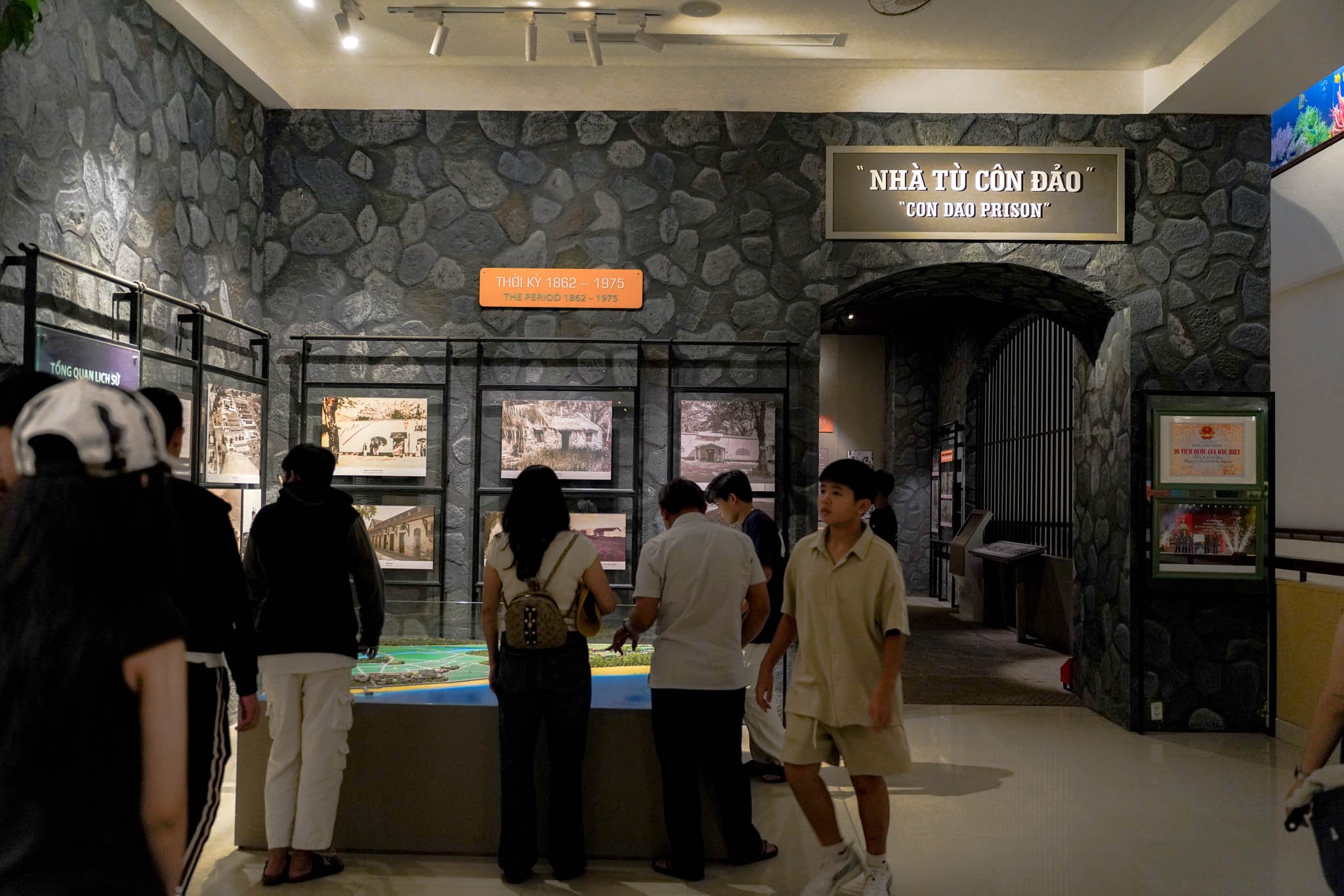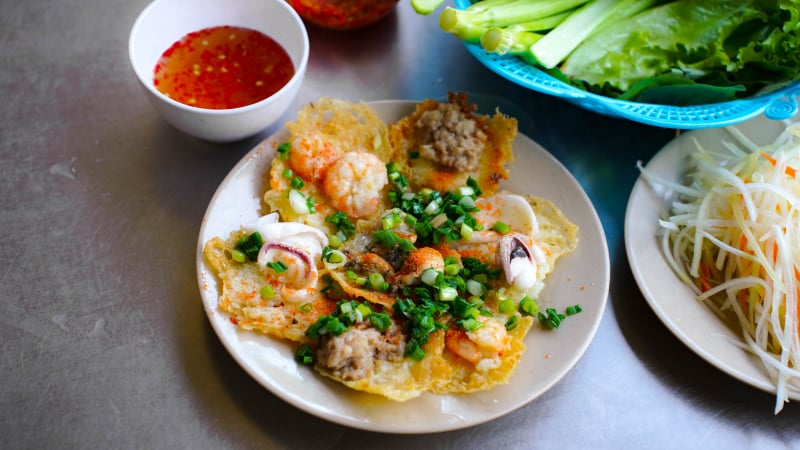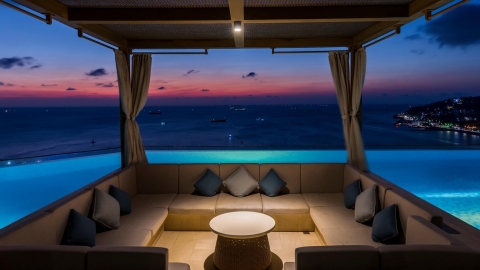Located at 4 Tran Phu Street is a modern architectural work that stands out like a "door" opening up centuries of memories, that is the Ba Ria - Vung Tau Provincial Museum. In the space of more than 18,000 m² of the Bach Dinh campus, the 7-storey building (4 main floors, 3 low floors) of the Museum stands out with its majestic and sophisticated design, bringing an exciting discovery experience.
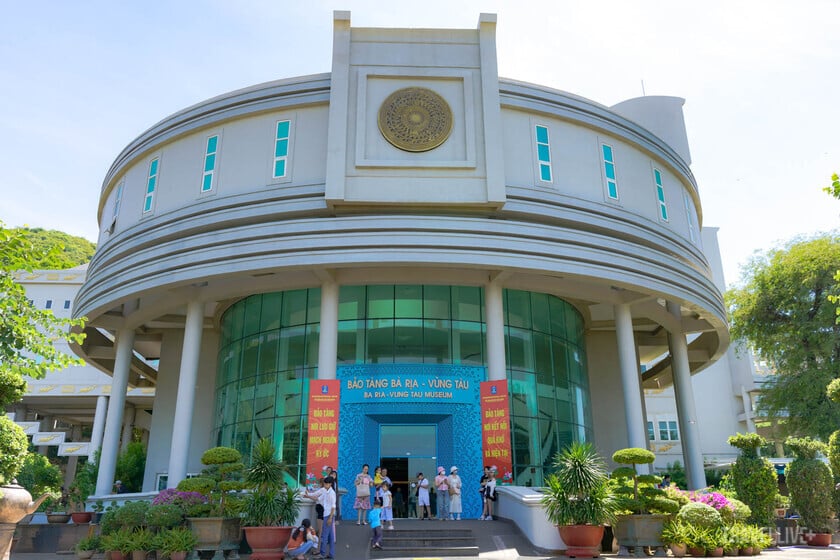
The museum's exterior with a view of Front Beach
Although it has now become a part of Ho Chi Minh City after the merger, Ba Ria - Vung Tau still retains its own unique features of a coastal land. The provincial museum is a living proof, a place to preserve and tell a unique historical and cultural story that cannot be replaced anywhere else.
Step into the "memory warehouse" of the coastal city
As soon as visitors step into the reception hall, the tour guide will give a general introduction to the locality: from administrative boundaries, important national highways to key economic zones. That opening introduction is like a “map” for visitors to shape the upcoming journey of discovery, before walking through the exhibition floors which are arranged scientifically and logically.
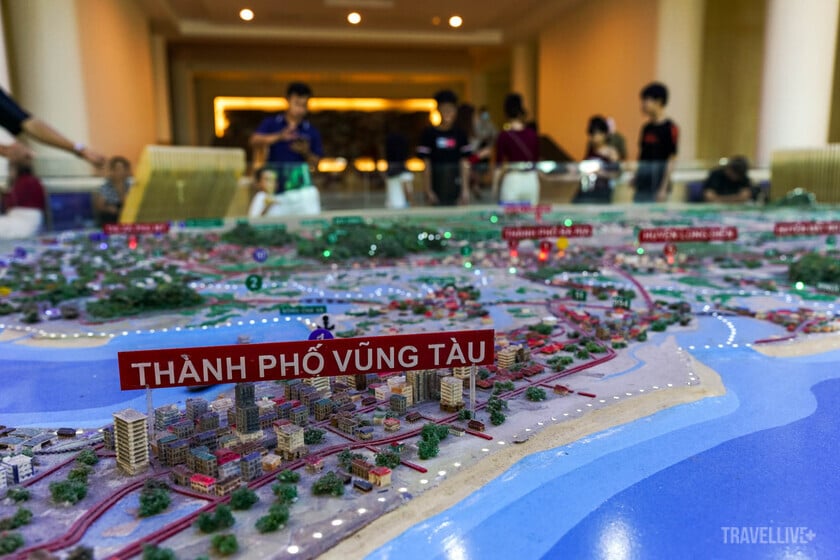

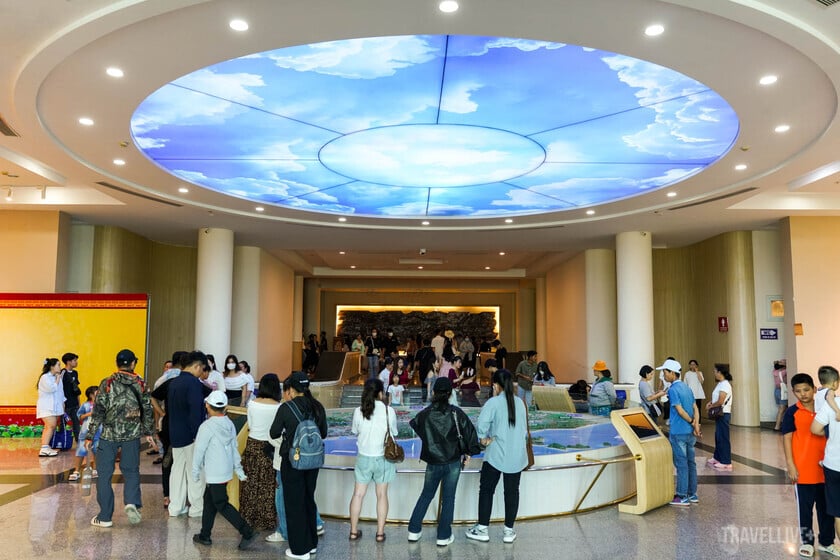
The model introducing the administrative boundaries of Ba Ria - Vung Tau province was previously placed in the center of the first floor lobby.
The first floor is the starting point of the journey, taking visitors through three fundamental themes: “The Land and People of Ba Ria - Vung Tau”, “Ba Ria - Vung Tau in the Prehistoric Period” and “Ba Ria - Vung Tau in the period of land reclamation from the 17th century to the mid-19th century”. Here, vivid photos, artifacts and models recreate the natural landscape of the sea and islands, rich mineral reserves, and the community life of the Kinh and Ch'ro people.
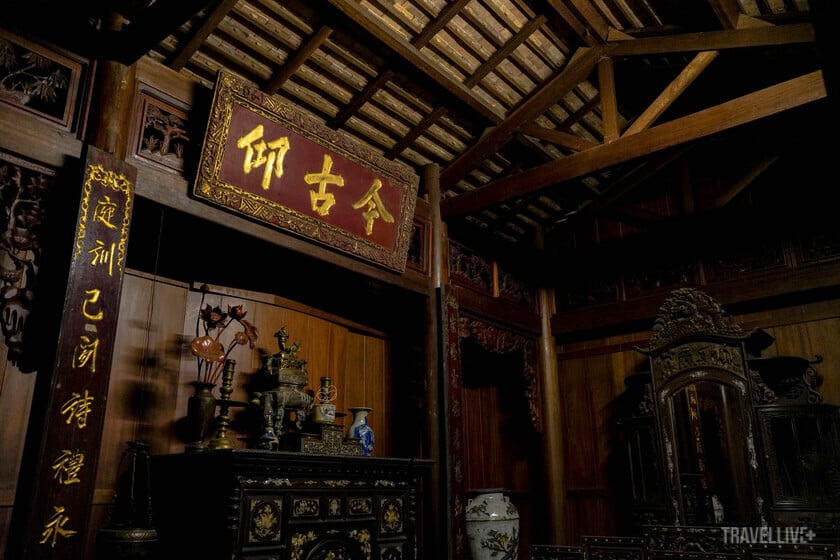
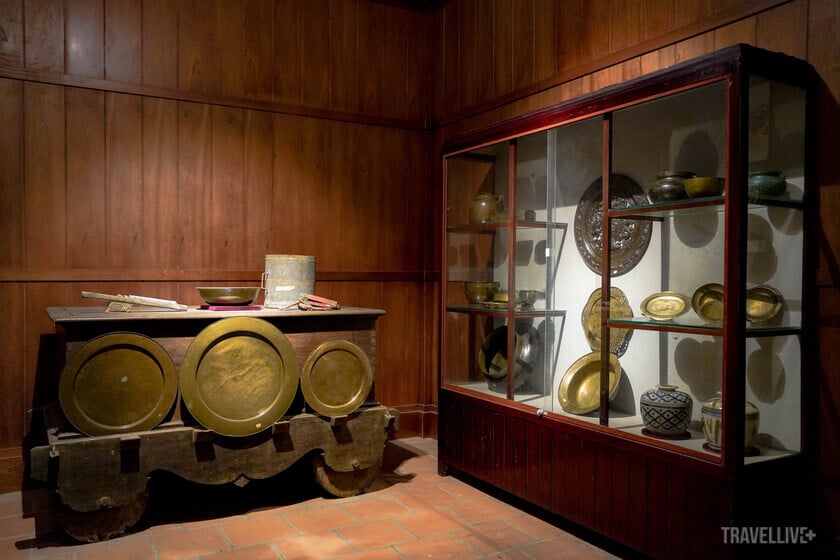

Area recreating the daily life of the Cho Ro ethnic community
The collection of 243 archaeological artifacts from nine sites dating back more than 3,000 years clearly demonstrates that this land has been inhabited since very early times. Then the traces of the pioneering period with images of handicrafts, market activities, and community culture help viewers clearly feel the vitality and determination of the residents in the process of land reclamation.
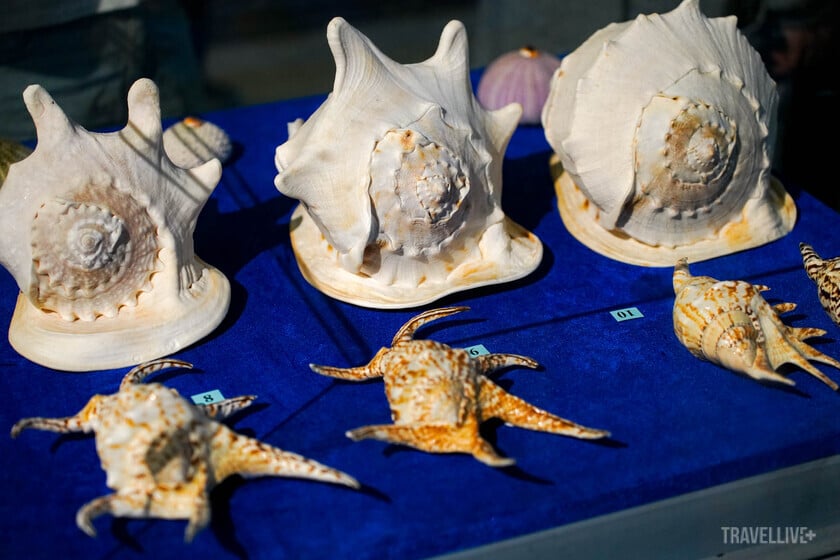


A 1/1 scale reconstruction of the Con Hai Dang tomb complex in Con Dao is displayed on the floor.
The heroic history pages on the 2nd floor
If the first floor tells the story of the formation of the land, the second floor takes visitors through a turbulent period: from the resistance war against French colonialism (1859-1954) to the years of resistance against American imperialism (1954-1975). The space here is divided into two large exhibition areas, vividly recreating each period.

Long Phuoc tunnels restored
The exhibition area of the resistance against the French holds more than 200 images and over a hundred artifacts, recounting the time when this land fell under the yoke of colonial rule, then rose up to fight under the flag of the Communist Party of Vietnam. Moving to the resistance area against the US, ten exhibition contents with nearly 200 images and artifacts recreated fierce battles, major campaigns and the indomitable spirit of the army and people of Ba Ria - Vung Tau. The eyes of the soldiers in the photos, the worn backpacks, or the letters sent to the rear... all make viewers silent, feeling more deeply the value of peace today.
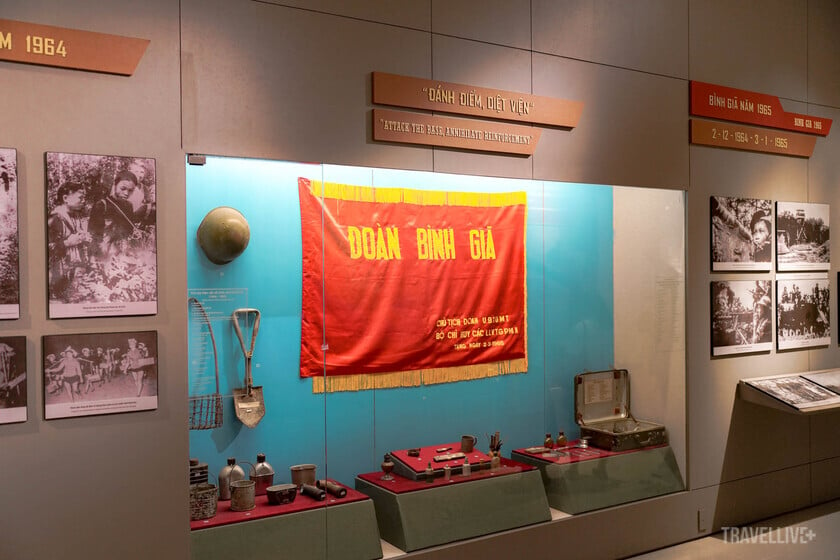
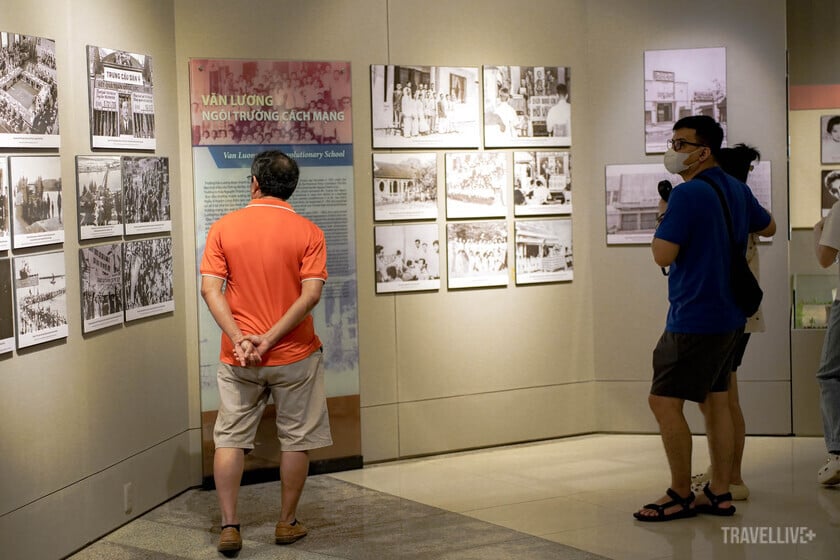
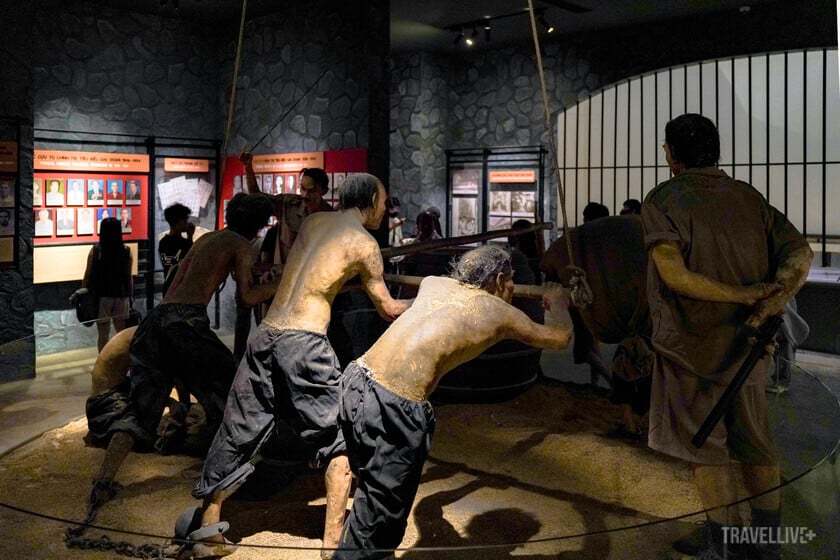

Restoration of Con Dao prison and tiger cages used to torture prisoners during the resistance war against France
The mark of integration and treasure under the sea
The third floor opens two special exhibition areas: one is about the process of building and defending the Fatherland from 1975 to present; the other is a collection of antiques salvaged from the sea of Ba Ria - Vung Tau.
In the first part, each historical period after the country's reunification is clearly shown: from the first steps on the path of economic, cultural and social recovery (1975-1985), to the 1986 renovation period and the outstanding achievements in the marine economy. Viewers will see that Ba Ria - Vung Tau is not only a land of sea and island tourism but also an important center of oil and gas, seaports and aquaculture.
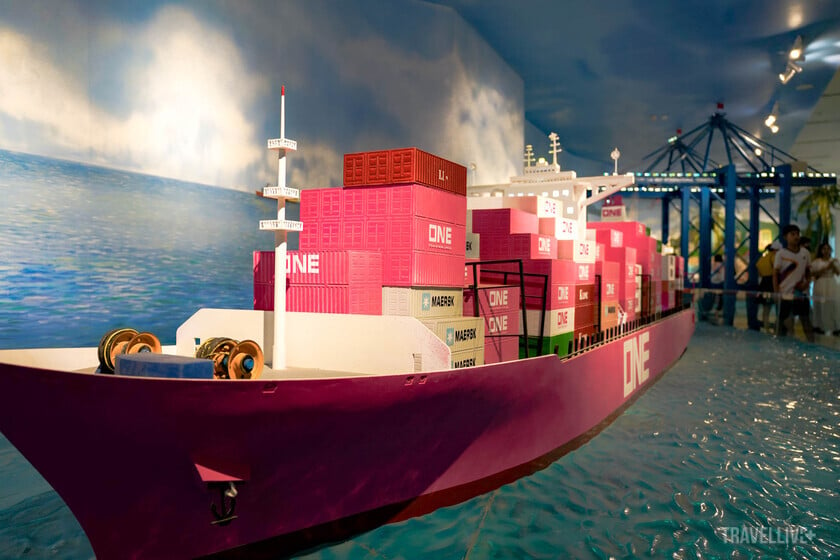

Oil and gas industrial complex - DK1 platform
The exhibition of antiquities brings a completely different journey - a deep dive into the sea of centuries ago. In a space designed like the cabin of an ancient ship, soft light and sound simulating the sound of waves take viewers back to the time when merchant ships from China, Thailand, France... docked or encountered accidents at sea. From the 14th to 19th centuries, the sea here witnessed many bustling trades, and today, 710 selected antiquities from celadon ceramics, bronze, glass... tell the story of the maritime silk road and the international trade position of Ba Ria - Vung Tau in the past.

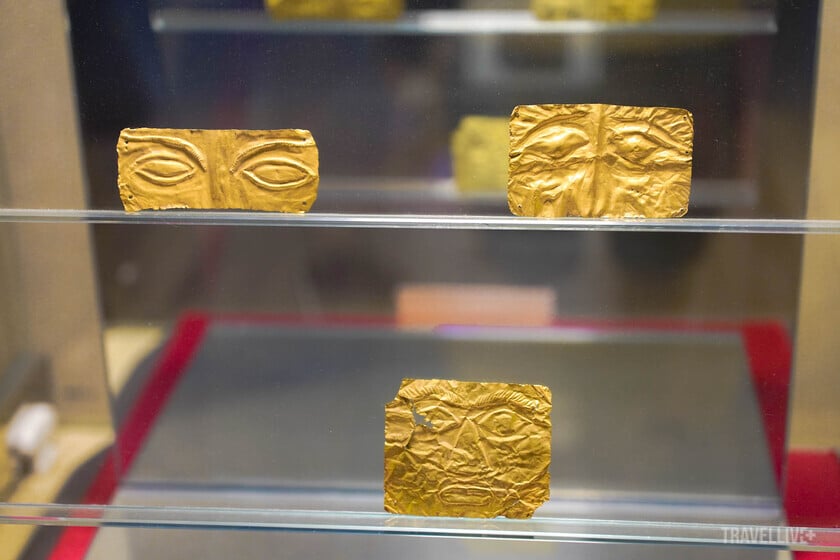

Hon Cau Antiquities – 17th Century China
Experience the historical panorama and connect the journey
The special feature of the museum is that every topic is presented not only through real artifacts but also through 3D paintings, models, and vivid perspectives. This helps visitors not only "hear" or "read" history, but also "see" and "feel" the context of each period. Spending a few hours here, people seem to walk along a river of time, from the primitive times to today, understanding more about the culture, people and the enduring vitality of the land and sea.
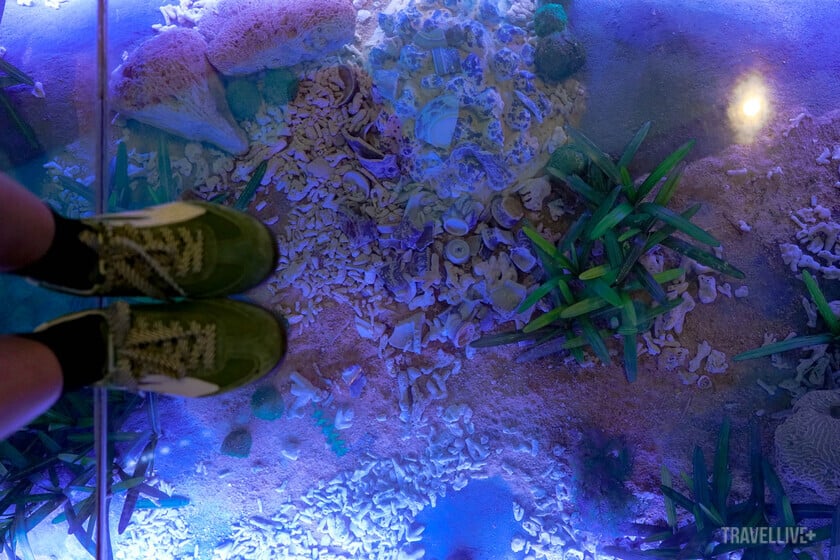
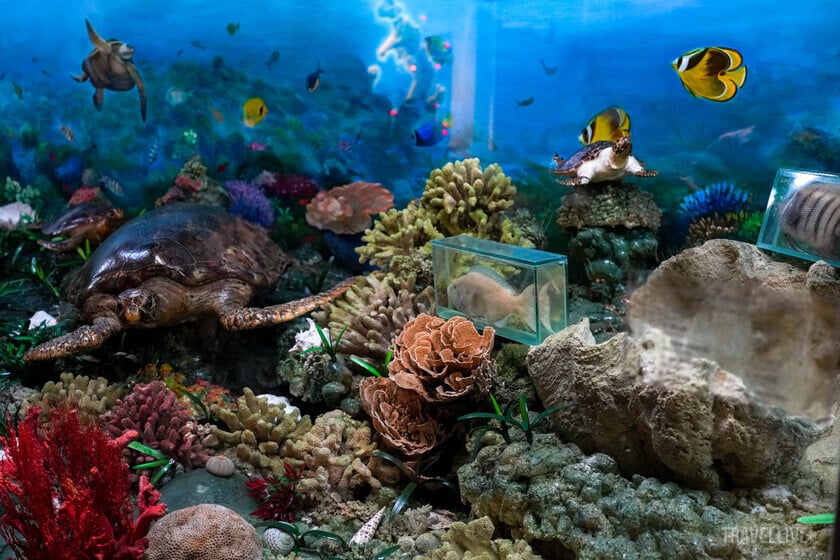

The museum attracts a large number of visitors, especially on weekends.
And the journey of discovery does not need to stop at the museum gate. Nearby, the Bach Dinh Historical Site, Ho May Tourist Area, Robert Taylor Ancient Weapons Museum or Bai Truoc Park are all ideal destinations to extend the experience. Each place has a different story and perspective, helping to complete the picture of Ba Ria - Vung Tau.
In modern life, museums are not only a place to preserve memories, but also a “bridge” for the past and the present to meet. Passing through each floor and each exhibition room, we realize that history does not lie still on the pages of books but is still living, breathing and continuing to be written in every breath of today’s coastal city.






